
Magnetic Resonance Imaging Clinics of North America
Scope & Guideline
Delivering high-impact insights for the MRI community.
Introduction
Aims and Scopes
- Fetal Imaging:
A significant emphasis is placed on fetal imaging, covering various aspects of fetal anatomy, pathologies, and interventions. This includes advanced techniques for diagnosing conditions such as fetal spine malformations and cardiovascular issues. - Neuroimaging:
The journal extensively covers neuroimaging topics, with a focus on demyelinating diseases, infectious diseases of the brain, and neuroinflammatory disorders, demonstrating a commitment to understanding complex neurological conditions through advanced imaging techniques. - Perfusion Imaging:
There is a strong focus on perfusion imaging across different organs, including the brain, heart, and liver. This includes innovative methods like dynamic susceptibility contrast and arterial spin labeling, which are crucial for assessing blood flow and tissue viability. - Oncology and Hybrid Imaging:
The journal explores the role of MRI in oncology, particularly in conjunction with PET imaging. This includes comprehensive reviews on the use of hybrid imaging technologies in cancer diagnosis and treatment planning. - Musculoskeletal Imaging:
Musculoskeletal imaging is another core area, with papers addressing various conditions, imaging techniques, and correlations with ultrasound, emphasizing the importance of MRI in diagnosing and managing musculoskeletal disorders.
Trending and Emerging
- Advanced Fetal Imaging Techniques:
Recent publications indicate a growing emphasis on advanced fetal imaging techniques, including the use of 3 Tesla MRI and detailed studies on fetal anatomy and pathologies, which are crucial for prenatal diagnostics and interventions. - Integration of AI and Machine Learning:
There is an emerging interest in the application of artificial intelligence and machine learning in MRI, particularly for enhancing image analysis, improving diagnostic accuracy, and automating processes. - Hybrid Imaging Technologies:
The trend towards hybrid imaging, particularly combining PET and MRI, is gaining momentum, reflecting the clinical need for comprehensive imaging approaches that provide functional and anatomical insights together. - Focus on Neuroinflammatory and Infectious Diseases:
An increasing number of articles are dedicated to neuroinflammatory and infectious diseases, indicating a rising awareness of these conditions and the role of advanced imaging in their diagnosis and management. - Pediatric and Adolescent Imaging:
There is a noticeable trend towards focusing on pediatric imaging, particularly concerning neuroimaging and musculoskeletal disorders, addressing the unique challenges and needs in this demographic.
Declining or Waning
- Basic Science and Technical Aspects:
There has been a noticeable reduction in publications dedicated to the basic science behind MRI techniques and technologies. This may indicate a shift towards more clinically oriented research and applications of MRI. - General Emergency Imaging:
The frequency of articles addressing general emergency imaging has decreased, suggesting a narrowing focus towards specific areas within emergency contexts, such as pediatric emergencies or specific body systems. - Conventional Imaging Techniques:
Papers discussing conventional MRI techniques without advanced applications or technological innovations are becoming less common, reflecting a trend towards more sophisticated imaging methods and applications.
Similar Journals

MAGNETIC RESONANCE MATERIALS IN PHYSICS BIOLOGY AND MEDICINE
Exploring the Nexus of Physics, Biology, and Medical ImagingMAGNETIC RESONANCE MATERIALS IN PHYSICS BIOLOGY AND MEDICINE, published by SPRINGER, is a premier academic journal dedicated to advancing the fields of biophysics, radiology, and medical imaging. With a strong presence in Germany and an international readership, this journal has established itself as a vital resource for researchers and professionals engaged in the interdisciplinary study of magnetic resonance applications. Featuring a commendable 2023 impact factor and categorized in Q2 quartiles across several domains—including Biophysics and Radiological Technologies—this journal provides a platform for innovative research and practical implementations in the field. Although it does not follow an Open Access model, it offers extensive archives dating back to 1984, affirming its long-standing commitment to scholarly excellence. The journal not only ranks impressively within Scopus metrics, but it also promotes ongoing discourse that bridges gaps between physics, biology, and medicine, making it an essential read for professionals and students aiming to stay informed about cutting-edge developments.

Egyptian Journal of Radiology and Nuclear Medicine
Championing Open Access to Radiological AdvancementsThe Egyptian Journal of Radiology and Nuclear Medicine, published by Springer, is a premier open access journal that has provided valuable insights and advancements in the fields of radiology and nuclear medicine since its initiation in 2010. With an E-ISSN of 2090-4762, this journal is dedicated to bridging the gap between research and clinical practice, allowing for the dissemination of high-quality research to a global audience. Situated in Germany, it enjoys a robust reputation in the academic community, evidenced by its categorization in the Q3 quartile for 2023, as well as its Scopus ranking, where it holds a position of #225 out of 333 in the domain of Radiology, Nuclear Medicine and Imaging, placing it in the 32nd percentile. The journal's open access model ensures that researchers, professionals, and students can freely access innovative studies, reviews, and case reports that discuss the latest methodologies, technological advancements, and clinical outcomes in radiology and nuclear medicine. As it looks toward its converged years spanning from 2010 to 2024, the Egyptian Journal of Radiology and Nuclear Medicine continues to be an essential resource for advancing knowledge and fostering ongoing collaboration in these critical fields.
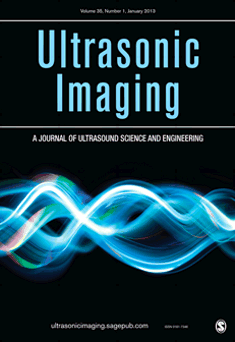
ULTRASONIC IMAGING
Shaping the Landscape of Medical Imaging with UltrasoundULTRASONIC IMAGING, published by SAGE PUBLICATIONS INC, is a leading journal within the fields of Radiology, Nuclear Medicine, and Imaging, with a particular focus on advancing the science and application of ultrasound technology. Since its inception in 1979, the journal has provided a platform for high-quality research, featuring innovative studies that bridge theoretical advancements and practical applications, making it an essential resource for researchers and professionals. With a notable impact factor reflecting its robust contribution to the medical community (2023: Q2 rankings in both Radiological and Ultrasound Technology and Radiology, Nuclear Medicine, and Imaging), ULTRASONIC IMAGING serves to disseminate pivotal developments in diagnostic imaging techniques, enhancing the understanding of ultrasound's role in patient care. Researchers are encouraged to explore this journal's collection of cutting-edge articles that push the boundaries of knowledge in ultrasound imaging and its implementation in clinical practices.
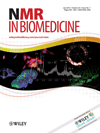
NMR IN BIOMEDICINE
Leading the Charge in NMR-Driven Medical DiscoveriesNMR in Biomedicine is a prestigious journal published by Wiley that has been at the forefront of advancing research in the integration of Nuclear Magnetic Resonance (NMR) techniques within the realms of biomedicine since its establishment in 1988. With its ISSN 0952-3480 and E-ISSN 1099-1492, this journal focuses on the application of NMR across various scientific disciplines, including Molecular Medicine, Radiology, Nuclear Medicine and Imaging, and Spectroscopy. The journal is classified in the Q1 and Q2 quartiles as of 2023, showcasing its significant impact and contribution, particularly in Radiology and Spectroscopy, where it ranks in the top tier of its fields. The Scopus ranks reflect its esteemed position, with notable placements such as #70/333 in Radiology and #25/76 in Chemistry Spectroscopy. While Open Access options are not available, the journal remains committed to providing high-quality, peer-reviewed research that fosters innovation and collaboration within the scientific community. Researchers, professionals, and students are encouraged to explore the cutting-edge findings presented in this journal, as it continues to shape the future of biomedical applications of NMR.
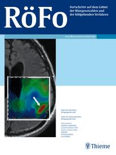
ROFO-FORTSCHRITTE AUF DEM GEBIET DER RONTGENSTRAHLEN UND DER BILDGEBENDEN VERFAHREN
Empowering Knowledge in Radiological AdvancementsROFO-Fortschritte auf dem Gebiet der Röntgenstrahlen und der bildgebenden Verfahren, published by Georg Thieme Verlag KG, is a pivotal journal in the fields of radiology and nuclear medicine, offering invaluable insights for researchers, healthcare professionals, and students alike. With an ISSN of 1438-9029, this journal has been a stalwart of scientific communication since its inception in 1975, actively contributing to advancements in imaging techniques and radiation therapy. Although it operates under traditional access, the journal maintains a respectable standing, reflected by its Q3 ranking in Radiology, Nuclear Medicine and Imaging and Q4 in Medicine (miscellaneous), highlighting its significance in the scholarly community. Its coverage spans a wide array of topics pertinent to diagnostic imaging and therapy protocols, making it an essential resource for anyone seeking to understand the complexities of modern radiological practices. As the journal continues to evolve through 2024, it invites contributions that enrich the dialogue around technological innovations and clinical applications in the realm of imaging modalities.

JOURNAL OF MAGNETIC RESONANCE IMAGING
Leading the Charge in MRI Research and Applications.JOURNAL OF MAGNETIC RESONANCE IMAGING (ISSN: 1053-1807; E-ISSN: 1522-2586), published by WILEY, stands as a leading academic platform in the field of Radiology, Nuclear Medicine, and Imaging. With an impressive impact factor that reflects its Q1 ranking in the respective category and a notable Scopus rank of 30 out of 333 journals, this journal serves as a critical resource for cutting-edge research and innovative practices in magnetic resonance imaging. Since its inception in 1991, it has provided a repository of high-quality research, reviews, and clinical applications aimed at enhancing the understanding and technological advancements within the imaging community. Although it does not offer Open Access, the journal's comprehensive approach ensures that professionals, researchers, and students alike can gain crucial insights and contribute significantly to the evolving landscape of medical imaging. With a commitment to excellence and relevance, the journal continues to push the boundaries of knowledge and practice in its field.
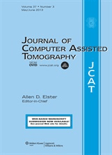
JOURNAL OF COMPUTER ASSISTED TOMOGRAPHY
Navigating the Future of Diagnostic Imaging TechnologiesJOURNAL OF COMPUTER ASSISTED TOMOGRAPHY, published by Lippincott Williams & Wilkins, stands as a vital resource in the field of Radiology, Nuclear Medicine, and Imaging. Since its inception in 1977, this journal has been dedicated to advancing the understanding and application of computer-assisted tomography, emphasizing innovative research and clinical practices that enhance diagnostic imaging techniques. With an impact factor reflective of its rigorous scholarship and relevance—ranking in the Q3 category—the journal serves as an essential platform for contributors and readers alike, navigating the challenges and opportunities within a rapidly evolving field. Researchers, professionals, and students are encouraged to engage with the rich repository of articles that cover emerging technologies, clinical applications, and theoretical advancements, collectively fostering a deeper comprehension of imaging sciences. Although not currently designated as an open-access journal, it continues to enhance discourse in the community from its headquarters in Philadelphia, PA, maintaining a commitment to the highest standards of academic excellence.
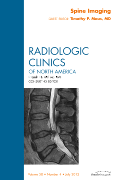
RADIOLOGIC CLINICS OF NORTH AMERICA
Connecting Knowledge and Practice in Radiology.Radiologic Clinics of North America, published by W B Saunders Co-Elsevier Inc, stands as a pivotal resource in the field of medical imaging and radiology. With a solid history dating back to 1963 and converging years extending to 2024, this journal has established itself as a reputable platform for original research, comprehensive reviews, and insightful discussions that advance the knowledge and practice of radiology, nuclear medicine, and imaging. Holding a Q2 classification in both the miscellaneous medicine and radiology categories and positioned within the 56th percentile among its peers, its contributions are vital for both academic research and clinical applications. Although it does not offer open access, the journal remains accessible through institutional subscriptions and is a must-read for researchers, healthcare professionals, and students keen on the latest developments in radiological practices. With a dedicated editorial board and a commitment to the highest academic standards, Radiologic Clinics of North America continues to shape the future of the medical imaging field.

Indian Journal of Radiology and Imaging
Advancing Radiology: Bridging Research and PracticeThe Indian Journal of Radiology and Imaging, published by THIEME MEDICAL PUBL INC, is a prominent open-access journal in the field of radiology, nuclear medicine, and imaging. Since its inception in 1984, the journal has provided a platform for researchers, professionals, and students to disseminate innovative research and findings in diagnostic imaging. With a growing impact factor and categorized in the Q3 quartile according to the 2023 rankings, it ranks among the notable journals in its field, although it currently stands at Rank #244 out of 333 within Scopus, reflecting its competitive position in radiology research. The journal, accessible to a global audience since 1999, aims to advance the knowledge and practice in imaging by inviting diverse contributions, including original research articles, reviews, and case reports. Its commitment to open-access publication fosters wider dissemination and collaborative discourse, crucial for the dynamic landscape of medical imaging.

Tomography
Elevating the standards of medical imaging research.Tomography is an esteemed peer-reviewed journal published by MDPI, focusing on a broad spectrum of topics related to medical imaging and diagnostics. Launched in 2015, this Open Access journal serves as a vital platform for researchers, professionals, and students in the fields of medicine, radiology, nuclear medicine, and imaging. With an impressive impact factor reflecting its relevance, the journal has achieved a quartile ranking of Q2 in both Medicine (Miscellaneous) and Radiology, Nuclear Medicine, and Imaging as of 2023. Renowned for disseminating high-quality research, Tomography welcomes original research articles, reviews, and technical notes, fostering innovation and collaboration within the scientific community. Housed in Basel, Switzerland, the journal aims to bridge the gap between fundamental research and clinical application, appealing to a diverse readership eager to advance the field of medical imaging.